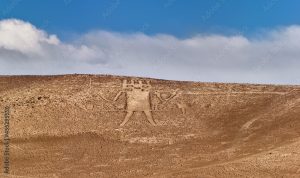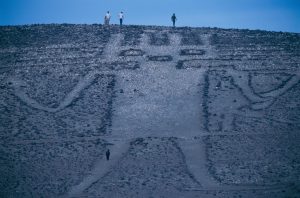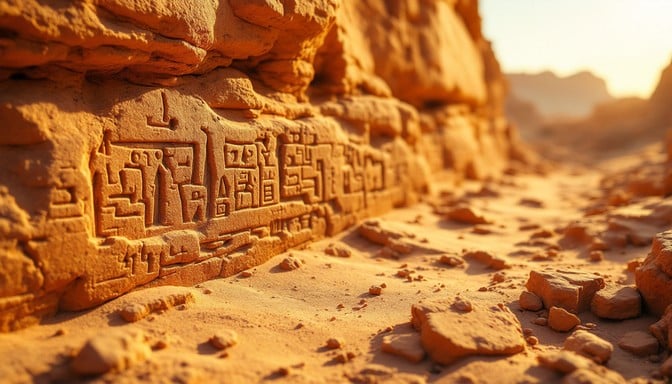The Atacama Giant: Mysterious Geoglyph
In the windswept desert of northern Chile, the Atacama Giant geoglyph rises to over 100 meters in length, one of the largest prehistoric figures ever created. Etched into the arid slopes near the town of Calama, this colossal human-like figure dominates the landscape, its arms and head clearly visible from afar. Scholars believe it was created by the indigenous peoples of the region between 1000 and 1400 CE, but its purpose remains shrouded in mystery.
A Colossal Desert Figure
The Atacama Giant is thought to have served as a religious or ceremonial marker. Its form suggests a deity or shamanic figure, and its size implies that it was meant to be seen from a distance — perhaps for spiritual observances or to mark sacred territory. Unlike smaller geoglyphs, this giant may have functioned as both a visual and astronomical reference point.

Astronomical Alignments
Some researchers argue that the Atacama Giant aligns with lunar and solar cycles. By observing the shadows cast on the desert slopes, ancient people could have tracked the changing seasons, planning agricultural activities or ceremonial events. These potential alignments link the geoglyph to the broader theme of sacred landscapes, where art and astronomy intersect.
Construction Techniques
Creating a geoglyphs of this scale in the harsh Atacama Desert would have required careful planning and knowledge of proportions. The figure was etched by removing surface stones to reveal lighter soil, similar to the techniques used in the Nazca Lines. The endurance of the Atacama Giant over centuries speaks to the precision and dedication of its creators.

Mystery and Interpretation
As with other geoglyphs, the exact meaning of the Atacama Giant remains unknown. Was it a guardian figure, a calendar, or a tribute to a deity? Its position near water sources and settlements suggests it may have played a role in both ritual and practical life. Some researchers speculate that it functioned as a territorial marker or a guide for travelers navigating the desert’s vast expanse.
A Legacy in Stone
The Atacama Giant geoglyph stands as a testament to the ingenuity and symbolic thinking of ancient civilizations. Its preservation allows modern observers to glimpse how prehistoric cultures integrated art, astronomy, and ritual into the landscape. Like other geoglyphs around the world, it challenges us to consider the ways in which humans have historically communicated across vast spaces — and across time.





